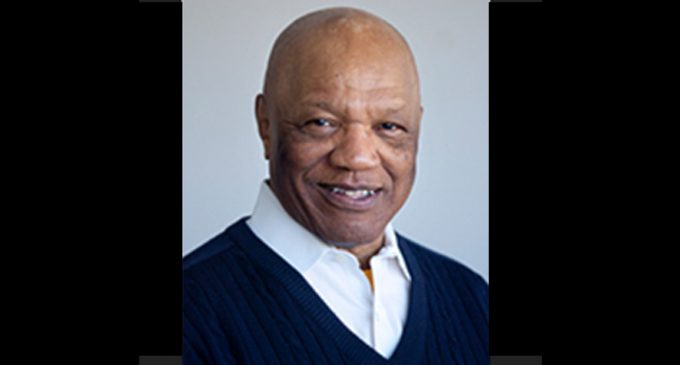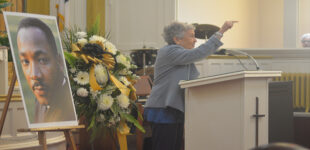Black reporter was there when MLK was killed

On April 4, 1968 – 50 years ago this week – a shot rang out aimed at the second-floor balcony of the Lorraine Motel in Memphis, Tenn.
Civil rights leader Dr. Martin Luther King Jr. had been killed, and Earl Caldwell, an African-American, was the only reporter there to witness the shooting.
Caldwell was a national correspondent for The New York Times 50 years ago, one of the first blacks on staff. He would later write for the New York Amsterdam News, New York City’s lead black newspaper. His name is renowned in the annals of American journalism because in 1970, Caldwell refused to be an informant for the FBI on the Black Panther Party. The case was ultimately decided by the U.S. Supreme Court, and as a result, all reporters today enjoy certain constitutional protections.
In a 2014 interview with the Black Press, Caldwell, 83, a writer-in-residence at Hampton University in Hampton, Virginia, recalled that fateful day when “The Dreamer” was killed on the balcony right above him.
It was Caldwell’s first assignment in the “Deep South.” His white New York Times editor, Claude Sitton, who would later come to North Carolina to become editor of The News and Observer in Raleigh, wanted Caldwell to go to Memphis to negatively “nail” King, and advised him to get down there early to “get the lay of the land.”
Dr. King had been in Memphis the week before in a march to support the striking sanitation workers, but the march turned violent.
King canceled a scheduled voter registration appearance in Wilmington, N.C., to go back to Memphis the first week in April 1968, to support the workers in their cause.
“When Martin Luther King was assassinated, I was the only reporter there,” Caldwell recalls, “And that’s because there were only a few of us [black reporters working in major media].”
During the turbulent 1960s, major news organizations had a hard time covering the Civil Rights Movement, and the riots in major cities, because they didn’t have many, if any, experienced black reporters on staff.
Earl Caldwell was one of a few, and to this day, his version of the assassination of Dr. King continues to raise eyebrows.
“You can take the official story, and what they say in that story … James Earl Ray shooting from the [flop house] bathroom window, fired, killed King, and then ran away … there’s not one single piece of the government’s official story that has any corroboration.”
“Not one single piece,” Caldwell maintains. “But because I was there … I know that you don’t see everything … but I do know that sliver [of the truth] that came past me, and that’s the basis for what I say.”
“I was there,” Caldwell maintains, in Room 214 at the Lorraine Motel, “Looking dead at the crime scene.”
“I DID see this figure in the bushes! I quoted this one fellow; his name was Solomon Jones, in my newspaper.” Jones was the chauffeur hired to drive Dr. King around in Memphis.
“He saw what I saw, but he actually said he saw a little more. He went to the federal penitentiary. He said that he was being framed because he refused to change the story of what he told me in the New York Times of what he saw that night at the Lorraine Motel.”
Caldwell continued, “ There was a housekeeper … same thing! But there was no official investigation! I can say that, because my room was right under Dr. King’s … just a few doors to the left. Nobody ever came to my door [asking] ‘Where were you standing? Did you see anything the night before? Earlier that day?’
“There was nothing!”
Caldwell believes, to this day, that “Most importantly, there was a massive cover-up.”
The next night someone came in, and they cut that thicket directly across from the motel, down to an inch from the ground. There are all of these things!”
Earl Caldwell later quit The New York Times, and says he’s been working on a book about “what happened in Memphis” ever since.
Convicted King assassin James Earl Ray died in prison, but not before Dr. King’s family advocated for him, saying that they were convinced he was set up, and did not pull the trigger.
The FBI said it spent “more man hours” on investigating the King assassination than any other case, but Earl Caldwell maintains, even today, that “there was no investigation.”
Indeed, under pressure from the King family, it was President Bill Clinton who ordered then Attorney General Janet Reno to reopen the King murder case.
But history still holds James Earl Ray responsible for the assassination of Dr. Martin Luther King, Jr.
















